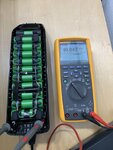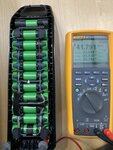Ravi Kempaiah
Well-Known Member
- Region
- Canada
- City
- Halifax
It literally doesn’t matter what voltage the charger cuts off at,
It absolutely matters and determines what is being fed into the battery. Controller only reads what the battery has and translates into % or bars on the display.
The reasons behind speed display inconsistencies are already well known
No, people don't know why there is a discrepancy.
Re positioning the magnet onto crank-arm doesn't increase the speed!
That you keep attributing different speed/GPS behavior to different controllers demonstrates you are reasoning about the system from a position of ignorance, which is why your conclusions do not reflect reality.
It is not hard for me to attack you and call you an ignorant snob who doesn't know the basics of physics or EE 101. But, I will let it pass this time.
I have/had 2 Haibikes, 2 Bulls, 1 R&M eBikes with Bosch motors. I know these systems well and Bosch has done some good stuff and some average stuff.
Without knowing the BMS cut-off voltage to which charger stops charging, we can't say what is 85% or 95% or 100%. This is not some rocket science.
If someone wants to feel special because they invested some money into a bike but there are inaccuracies and want to attribute it to some special feature, it is upto to that individual.

